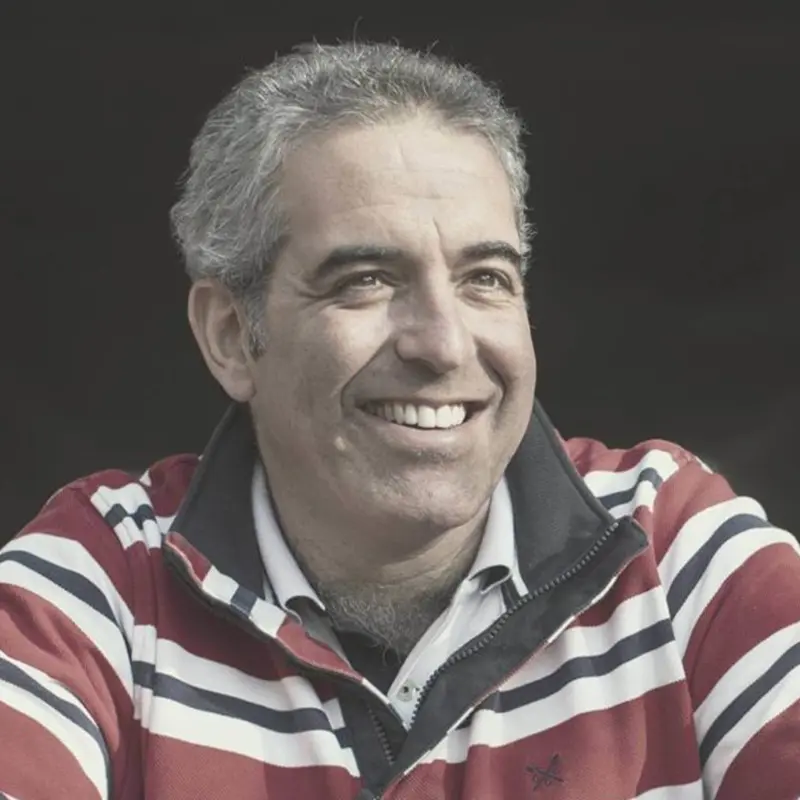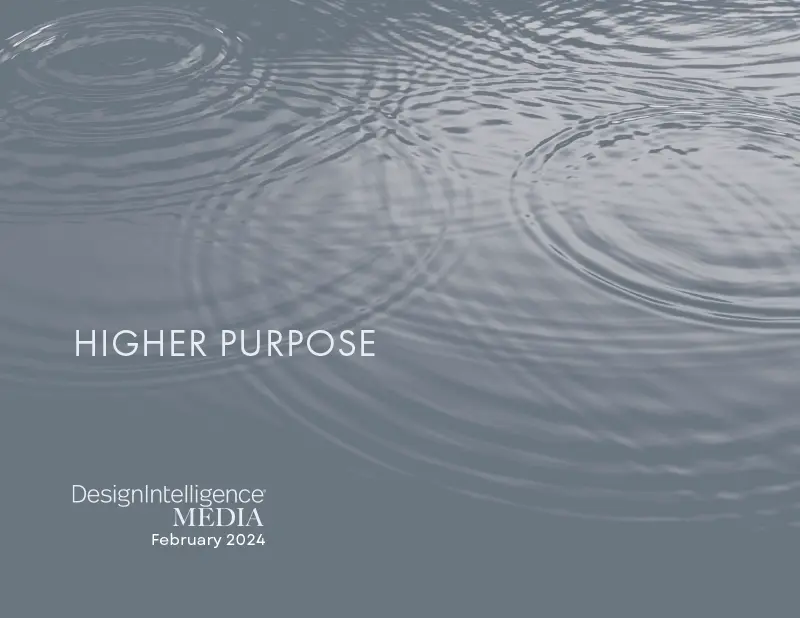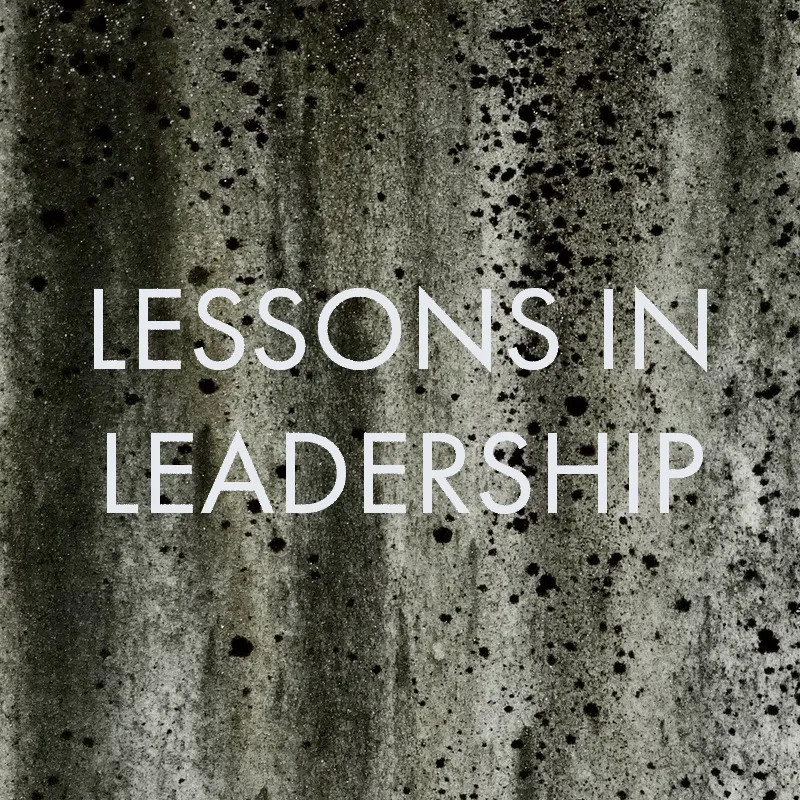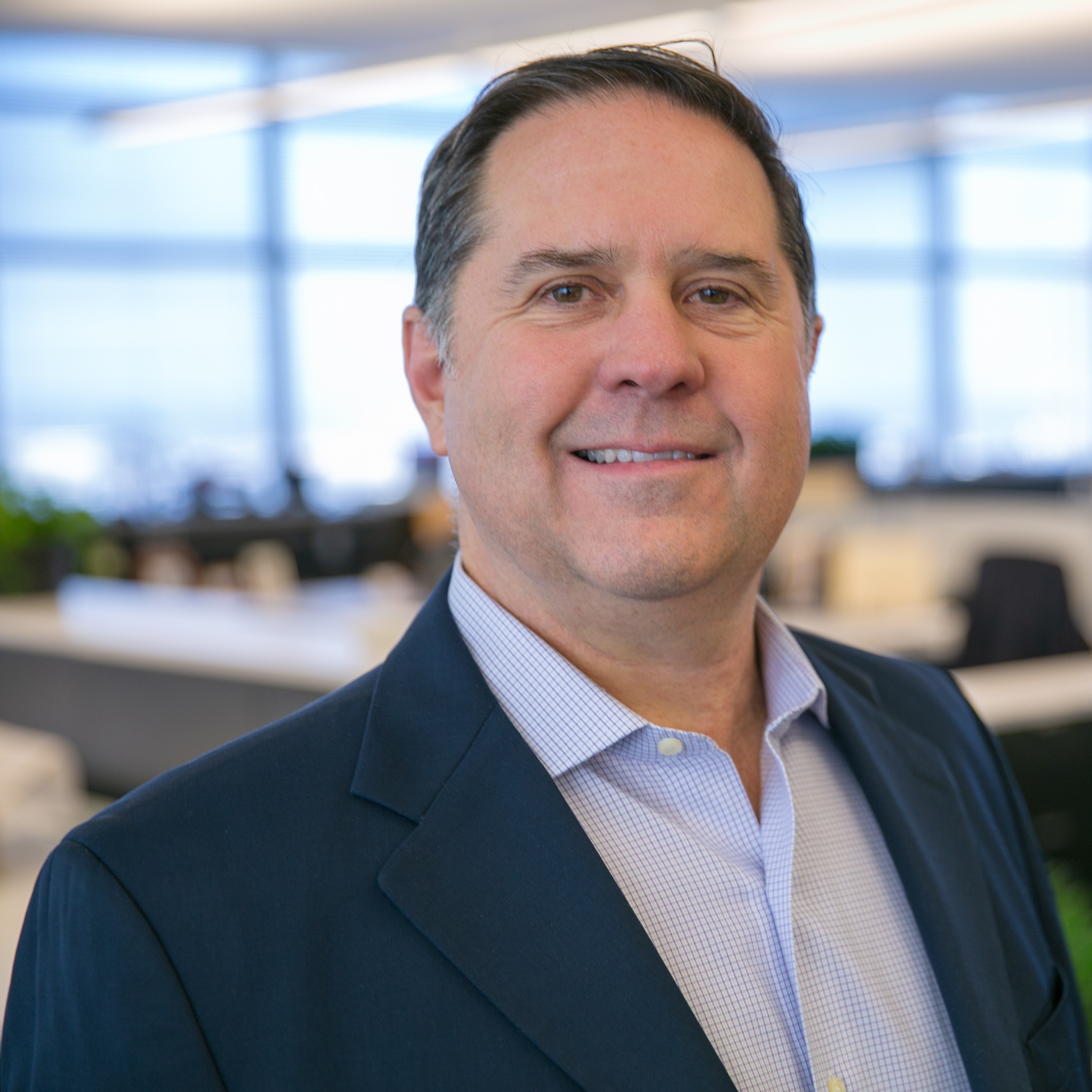
Higher Purpose
Craig Goldblatt
Creative director of Living on Purpose Global
February 21, 2024
In this conversation about leadership and service, Craig Goldblatt shares his journey to discover intention and purpose.
DesignIntelligence (DI): We’re talking with Craig Goldblatt, an inspirational keynote speaker and international guru on reaching human potential, finding true purpose, magnifying your impact and serving others — timely topics in the rapidly expanding responsibilities influencing the design and construction professions. Please share your origin story, your hero’s journey. What have been some of your obstacles? Who were your mentors? Were there any life-changing incidents? How did you come to do what you’re doing?
Craig Goldblatt (CG): Thank you so much for the opportunity. The first thing I want to say, Michael, is that I’m about a million miles away from being a guru.
DI: Fair enough, but it’s relative. Our themes for this year include leadership and burgeoning professional responsibilities. As your work pertains to those topics and contexts, I’d say you are well ensconced in guru territory. How did you get there?
CG: I’m passionate about my life and how we can serve. It’s a privilege to be in this world and be serving as I am. I’m 50 years old, born in South Africa in 1973. My parents emigrated to the U.K. in 1977, in the middle of the winter of discontent, a fascinating time to arrive in the U.K. My parents weren’t fans of apartheid, and they struggled with the inequality building within it. There were so many problems in South Africa in those days. Many said the late ’70s could have seen a civil war there. My parents looked at their four- and five-year-old kids and felt England would be a better place to bring us up.
Dad was academically gifted. He was a Cecil Rhodes Scholar. He achieved great things in that world, studied social sciences at Oxford University and then returned to lecture about law in South Africa. He was offered great accolades in the world of constitutional law in South Africa, but we decided to emigrate. I grew up in Surrey, 35 miles southwest of London, and earned some business diplomas. Unfortunately, my mom got very sick and passed away when I was 18. Like so many youngsters that lose a parent young, I didn’t deal with it well, and I blocked her death out. Mom was spiritual in her orientation. She was a Nichiren Buddhist and spent many hours every day in meditation.
It was a strange time because, as a kid, I felt my mom’s spirit. Her heart was growing, yet her body was shutting down all at the same time. As I reflect on Mom’s life, she was an incredible light for me. She taught me about strength and how to live with those difficulties. After she died, I poured my heart into my sales work and went on the road as a foot soldier selling capital equipment to industries. I got a job in the world of international freight development in London, which had a vibrant sales environment in the early 2000s. I was fortunate and got promoted. But I always say I got promoted to the level of incompetence because, as I got more senior, they put me behind a desk and asked me to crunch numbers and look at business strategy when all I wanted to do was inspire the sales team.
By my late 20s, I realized my only real business gift was in communication. I was great at developing the sales folks, but not at sitting behind a desk. By the time I was 29, I left the corporate world. I started teaching basic sales rudiments such as how to plan, prepare and introduce yourself, how to ask questions, how to present with integrity and power and how to build a pipeline. I enjoyed teaching and realized my future was in professional speaking. At 30, I found my way onto the European conference circuit and started trotting around the continent, delivering talks to corporate organizations.
I was never a great student in school, but when I hit 30, I became a voracious learner. I dove deep into neuroscience, neuro-linguistic programming and quantum physics to understand how we tick emotionally, internally. Inside ourselves, how do we learn about the clarity of our intention for our life, our purpose and how we meet our emotional needs? I had some great teachers, many from the U.S. I followed Jack Canfield, Mark Victor Hansen, Anthony Robbins and Deepak Chopra from a spiritual perspective. I read everything I could in my early 30s. I was lucky. In those days I was speaking at 100 conferences a year and was learning a lot.
At 35, I was tired and burned out. I’d been on the road speaking full-time for five years, and I had an opportunity to go to India to study. I met a lady in India doing incredible work in the heart of the Ecuadorian part of the Amazon rainforest. She was part of a charity working with Indigenous communities in Central and South America. She invited me and some others to visit these communities in the Amazon rainforest. There, I had an opportunity to sit quietly and understand more about my mom’s life and grieve for her, because between the ages of 18 and 35, I wasn’t ready to accept what had happened to her.
When you look at a village in Africa that can hardly eat and they’re still joyful, it’s because they’d live and die for each other. They know exactly who is standing next to them, and they trust them.
DI: Were there any other catalyzing events?
CG: I went to places like India and the Amazon to learn about Mom’s legacy. I had an epiphany there and came home and told my wife and friends I wanted to build a charity in Africa. That’s where my architectural journey started, when I decided to build a school for 800 kids in the north of Burkina Faso in West Africa. Burkina Faso is a landlocked, sub-Saharan country. If you look at the Human Development Index laid out by the United Nations, it’s one of the poorest countries in the world from a literacy perspective.
If you want to build using vernacular architecture in an extremely poor country and give its communities opportunities to live and learn in houses and schools and have decent hospitals, Burkina Faso is an amazing place to deploy architectural abilities to make a difference. Coincidentally, I found an amazing architectural charity run by wonderful architects in London called Article 25.
I persuaded their CEO, Robin Cross, to do it. He worked with the likes of Jack Pringle, Sunand Prasad and other great architects. Robin came to Burkina Faso and kindly took us on as a partner and built us an amazing school with laterite stone from local quarries. The architects in his office designed us a wonderful building that was fit for purpose. That allowed us to run great vocational programs for the kids and support farming, woodwork and sewing, and it was a fantastic platform and introduction to the world of architecture for me in real time.
After building that school, the community learned how to build from these great architects and project managers, so much so that they’re now building other schools based on the principles laid out by those architects. That was a great project for me. At the same time, we managed to raise enough money to invite other people to come and run the charity, and that gave me an opportunity to go back to full-time speaking. Fast forward, and I’ve now been fortunate to be speaking for the last 21 years.
DI: What is your focus? Your message?
CG: My absolute focus for audiences now is to serve them in a way to focus on our internal psychology. I help audiences meet their emotional needs through four major elements of our internal world. I talk to audiences and work with people first on our emotional legacy. What’s our intention for our life? The second thing I focus on is our purpose. What’s our reason for living, and how do we meet our emotional needs? The third thing I focus on is our identity, to remind people about their magnificence and unique talents. As the foundation of this work, the fourth thing I work with people on is their beliefs and values. The charity gave me the opportunity to learn about the cultural diversity that exists in different parts of the world, in India, Africa and different places. Building from that foundation, now I speak at conferences, I train and coach people, and we take people to remote environments to give them an opportunity to be introspective and learn more about their own personal leadership. In a nutshell, that’s my life story.
DI: Fascinating. Is it safe to say that what transformed your traditional career into your current higher calling was a broad worldview entry point, being from South Africa and the U.K.? I’m embarrassed by how little we Americans know about the world when I travel and talk to others. You had perspective as a benefit. Then you tried some of the more traditional career roles and found they didn’t suit you.
CG: No question.
DI: The negative experiences can be even more valuable than the positive ones by telling you what you don’t like. Then, your two significant life-shaping events, your mother’s passing and your opportunity in Burkina Faso. Are those the major shapers?
CG: Yes. Absolutely.
DI: Those were the forces that helped you transcend a traditional career and find your true purpose?
CG: You’ve hit the nail on the head. It’s mostly my experiences. Unfortunately, for whatever reason, we’ve evolved as we have because we learn so much more from our suffering and difficulty, don’t we?
DI: Yes, it’s new so we notice it. It’s furthest outside our learning curve and comfort zone. It hurts more so we remember it.
CG: Exactly.
Every generation has to learn the lessons again. There’s something endemic in human beings that says that we have to create and destroy things again. It’s part of our evolution.
DI: I wish I would’ve figured that out earlier in my career. I would’ve taken more shots. I would’ve failed more often.
CG: Yes. I was so fortunate to be able to travel early in my development to places like India, West Africa and the Amazon, because the more intense the environment, the more we get out of it. In neuroscience, I was taught that two things impact our brain the most. One is intensity and one is trauma. From a chemical perspective, a shock or an intense experience — it can be a hug, a kiss, jumping out of a plane, telling somebody we love them or anything intense — helps stimulate our nervous system to the point where we look at our belief systems again. We look at our neurological pathways and our lives in a different way, and so our beliefs in a different way. We change our beliefs based on intense experiences. I happened to be lucky enough to visit some very intense environments.
DI: To hear you say that is reinforcing. In our current world of dis- and misinformation, what fuels the media and their quest for dollars is emotion and extreme content. If you love a certain politician, they feed that to you to evoke emotions of fear, anger and misguided certainty. The extremes and the trauma push people to the edges and become polarizing — a vicious cycle. It’s emotion-driven motivation. What motivates you?
CG: A sense of contribution. As you say, most of us end up in this place, don’t we? What motivated me in my 20s was to know that I was enough, enough for my dad, to be significant and have a deep connection. To know that I was enough and was loved. I always knew that, but I didn’t actualize it. To create a sense of certainty for myself and know I had a career ahead of me. Early in my career those were the important things. As you get older and more experienced, you become more certain as to who you are. You’ve absorbed life’s knocks and difficulties. Now, my absolute motivation is to grow and to give back, to contribute.
DI: You talk a lot about finding your true purpose, and that starts with intention. Obviously, you didn’t start with that intention when you were 18 or 20.
CG: Certainly not.
DI: But it has since manifested itself through your life path. You talked about having presented to groups of architects. At DI, that’s our world. Creators of the built environment are who we serve. This is a huge generalization, but that group is stereotypically egotistical, very much about themselves. Yes, we have a higher calling and a duty to society, but we are an egotistical lot. What’s your experience been in trying to transform those kinds of groups? Those “enamored of their own inherent specialness” to realize this higher calling of serving others? Any reflections on that challenge?
CG: I’d like to generalize even further. We’re living in a world where media stimulation is so extreme, and we’re so overloaded as to who we should or can be or that we’re wrong in this and we’re right in that and we need to look this way and we need to do that.
DI: Too many false binaries ...
CG: Yes. Our media stimulation is extraordinary — almost superhuman or beyond our ability to absorb or cope with it. As a result, most people are living in a reactive place, trying to swim against the tide. People are desperate to know who they are. That causes us to become self-centered. We’re trying to look after ourselves. When we go further away from a deep community, we lose our sense of certainty. When you look at a village in Africa that can hardly eat and they’re still joyful, it’s because they’d live and die for each other. They know exactly who is standing next to them, and they trust them.
What’s happening, not just in the architectural community and its related industries but at least in the Western world where I live and operate in conferences and with companies, is that we’re so disparate now as human beings. What we need is a deep sense of community and belonging. When we lose that now, as kids, and we go to the dollar, to more money and the belief that we need a bigger house and a bigger car, and we need, need, need, need to be enough, then we become self-centered. We don’t even realize that’s what we’re doing, but that’s what’s happening. My wish, my intention, is to support people to have enough time to create a sense of community with those they love around them and those they feel can give them an opportunity to grow and develop themselves.
DI: That’s the perfect segue. I just read a book by Yuval Noah Harari. His first book was “Homo Sapiens.” His second book is titled “Homo Deus,” meaning “Man Version Two.” That is, as we aspire to the next evolution of humankind, or the convergence of man, machine and artificial intelligence to a potentially higher plane, how do we go about that? I found this fascinating. He talks about our core economic assumptions. Ever since we stopped being hunter-gatherers and began farming, division of labor and economics and ownership began, and power crept in.
At least in the Western world, there has always been this assumption of capitalism as a default mindset. We must accumulate more. We must make more money. The assumption is about growth and greed. “We must grow. There are always going to be more resources.” It’s been a fixed-pie, win-lose mentality. As Harari explains, we did fine when we operated as communal groups. If there was one great tool for killing tigers, we shared it. It wasn’t owned by any one person. Connecting this to our current world of design and construction, the projects we do, stupidly, are based on first cost rather than life-cycle cost or impacts on a broader constituency.
CG: Yes.
Where I’ve ended up is that we have to start with self.
DI: When we are trapped in that capitalistic paradigm, if you’re like most clients, you’re going to say, “My job is just to deliver this project on budget, world impact be damned.” So, the whole set of rules we’re playing by is insane. My question, wish and hope is: How do we change that essential paradigm? Per Thomas Friedman, China is trying to embrace that defunct mindset now. They want to drive SUVs and have McMansions just like the U.S. They want to be as grossly energy consumptive as we are in the U.S. How do you get us off that mindset to see more broadly? It’s a huge question, obviously, but surely you’ve grappled with it.
CG: Oh my goodness, absolutely. When I studied NLP, they taught us about communication filters: how we communicate between our subconscious and conscious minds and how we then experience the outside world through our senses. How do we make sense of everything?
DI: NLP?
CG: Sorry. Neuro-linguistic programming.
DI: Thank you.
CG: NLP was built primarily by two gentlemen in the 1970s, Richard Bandler and John Grinder. One was a mathematician, and one was a linguist. They were fascinated by how we communicate internally and how we make sense of our maps of the world. What does the world look like in our eyes? They built an extraordinary psychology. It’s not new, either. Hitchcock was using it in his films way before they looked at it. It’s thousands of years old, but they packaged it in a clever way.
One of the filters they taught us was the spectrum of granular versus universal thinking. What makes a difference to the person in front of us, and how does that make a difference to the wider world? Some of us are micro-focused, they called it, and some of us are macro-focused. What’s our focus? Is our focus making a difference to our two or three children? Or is our focus to help the whole of Africa? What’s our focus, and how are we going to make a difference there? How are we going to bring people back to balance and community? How do we do this?
I used to have a macro filter. I used to try and help with bigger systems. Whether I was any good at it, I don’t know. But we did some good projects. Christ didn’t solve all the world’s problems; Mandela had more power and even he didn’t solve South Africa’s problems. All these people have immense power. Martin Luther King made an enormous difference to America, but America’s still got its racial and social problems. Every generation has to learn the lessons again. There’s something endemic in human beings that says that we have to create and destroy things again. It’s part of our evolution.
My truth now is having the courage to deeply serve and positively impact one person at a time. We have to recognize that, for the person inside us, we were born with our own lungs and our own heart. We have to be the best person we can be, and we have to shine. Therefore, if we focus on ourselves a bit more and meditate a bit more and breathe better and look after our health better, then we have the energy to be able to love the person in front of us more. That’s where it all starts. I might be wrong because there are people that can truly change the world through their millions. But where I’ve ended up is that we have to start with self.
DI: So true. I hate to derail a wonderful inspirational conversation with something pragmatic, but I’ll do it anyway to ground us, bring us home and convert this to applied, applicable knowledge.
CG: Please do.
Our behaviors stimulate our beliefs, and our beliefs create our purpose.
DI: How do we start with self? Your website talks about intention and leaving a legacy, but let’s get practical. You share a blueprint to make that happen. Without giving us your entire body of work, is there an overview you can offer on how to make this tactical?
CG: In NLP there’s something called levels of change. How does a human being change? I teach seven different levels of change. The first is intention, the second is purpose, the third is identity (who we are), and the fourth is belief and values. They are what we call internal levels of change. In the Western world, in England, we don’t measure those elements, those levels of change. What makes it practical is the three lower levels of change, which are our skills, our behaviors and the environment we create. And when I talk about those being lower levels, they’re not less or more important than the higher levels of change, they’re simply external levels.
In other words, what makes change practical is to look after our environment first. The second thing that makes real change is how we behave within that environment, our day-to-day behavior and daily practices. And the third is our level of skill. Our capabilities and being able to work on improving our weaknesses and harness our strengths. My answer at a practical level is to focus on being aware of looking after the environment around us, which is the most important thing we can do these days. The second is: how do we breathe? How do we read books? What books do we read? How do we treat others?
Where do we choose to spend our time? At the gym or drinking alcohol? What are our daily practices? Are we meditating every morning? There are ten practical behaviors we can instill in our daily practice that our grandparents had more time to foster than we have, but they’re vitally important. I’ll finish my answer by saying what’s practical. Gandhi said this: Our behaviors stimulate our beliefs, and our beliefs create our purpose. What does our daily routine look like? Are we waking up in the morning and breathing in the right way for 15 minutes? Are we holding our heart and setting an emotional intention for the day? Are we remembering to look at nature and love a tree every day and love the sky and love our children and spend time watching them play? Are we reading the right things and staying off too much social media? Are we eating the right things? Are we filling ourselves with vegetables and water? Are we doing the basic things to make our life practical? Because they end up being our destiny.
DI: Such a wonderful answer, Craig. I’ve enjoyed this conversation immensely. In a short time, you have illuminated a path to serving well and finding a higher purpose. I can’t thank you enough. It’s great to be able to meet you., I sincerely hope we will continue the conversation and I look forward to our next one — and to sharing this with our DI audience and beyond.
CG: Me too. Thank you for the opportunity.
Craig Goldblatt is creative director of Living on Purpose Global, a man on a mission to bring clarity and purpose to one million people over the next 10 years. He is a master at unlocking and unleashing purpose, building on the principles of neuro-linguistic programming. As a world-renowned transformational speaker, impact coach and philanthropist his work is embraced by leaders, businesses, charity enterprises, NGOs and nonprofit organizations who want to make world-changing contributions with massive results. As founder of Giving Africa, he has been responsible for construction of new schools and transformative work for many.




